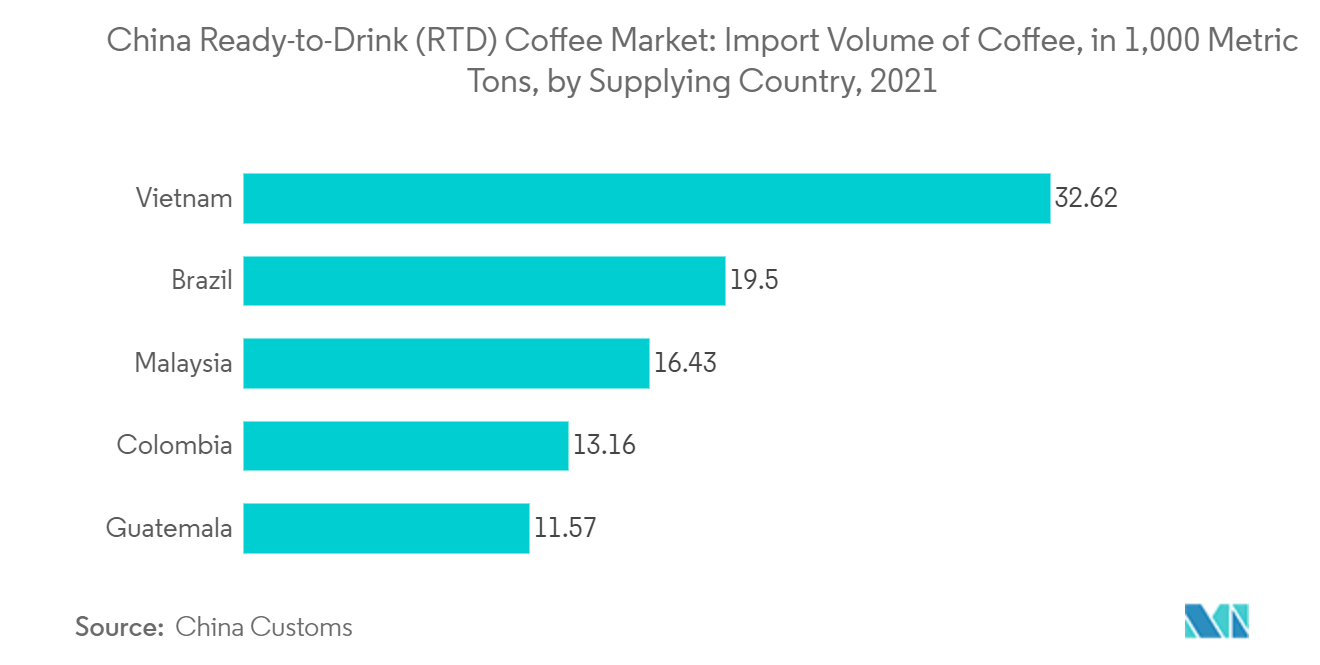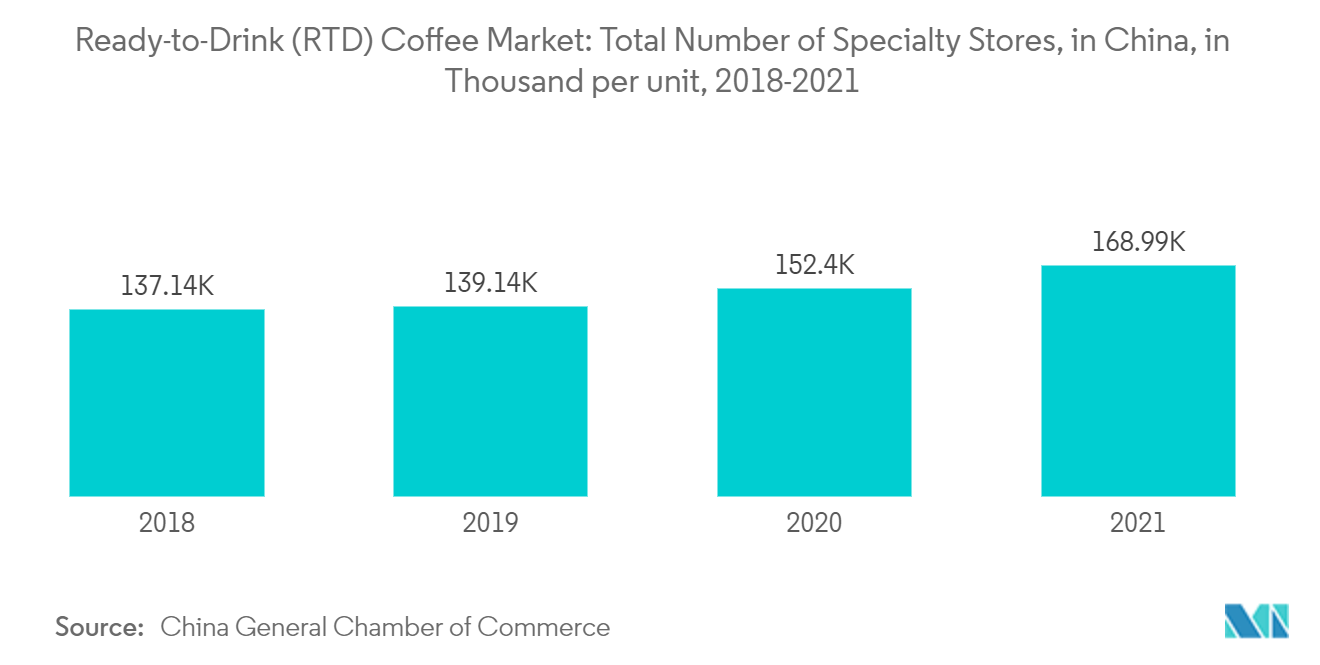Market Trends of China Ready-to-Drink (RTD) Coffee Industry
Growing Preference for Coffee Over Tea
The demand for convenience food and beverage, particularly RTD coffee, is growing at a faster pace due to changes in social and economic patterns, as well as increased expenditure on food and beverage, awareness about healthy foods, changes in meal patterns, and existing food habits, and the desire to taste new products. Healthy beverages are necessary for fitness-oriented consumers who consume meals frequently throughout the day. Hence, the demand for healthy RTD coffee products is gaining traction among consumers. Consumers in China prefer coffee over tea as it appeals to adventurous young, rich, and urban consumers. This is because, initially, coffee is considered a Western concept by most Chinese consumers.
Manufacturers have targeted Westernized young professionals as the main target market for RTD coffee. Another large consumer group that influences RTD coffee consumption is returnees. Many of these returnees have lived in Western countries for a decade and have become accustomed to the RTD coffee culture. Upon returning to China, they continue living as they have become used to. Foreign expatriates make up a large proportion of coffee consumers in China. According to USDA Foreign Agricultural Service, in the coffee crop year 2021/22, the Chinese population consumed around 4.2 million 60-kilogram bags of coffee. Moreover, a significant portion of the population has access to easy on-the-go beverage options due to the increased penetration of these products in the market. Since the transforming consumer habits promote smaller frequent meals, consumers tend to buy RTD coffee more often, which is expected to propel the market in the forecast period.

Increase in Number of Specialty Stores
Coffee consumption is increasing in China and will increase during the forecast period. There is a trend toward a coffee culture developed over the last decade mainly due to the influence of Cosmopolitan Beijing and Shanghai. Coffee Chains like Starbucks have been pushing coffee culture onto young people, who now enjoy hanging out and drinking with friends in coffee shops. Further health awareness among educated consumers with comparatively strong consumption is interested in purchasing coffee in Speciality stores. According to the China General Chamber of Commerce, in 2021, specialty stores in China recorded a sales value of around USD 0.30 trillion.
Recently, coffee shops witnessed tremendous growth as outlets gained popularity as hangout zones for friends, family, colleagues, and business associates. The increased acceptance of coffee is attributed to the emergence of premium stores from companies such as Starbucks Corporation and Tim Hortons, fueling the market growth. Starbucks Corporation continued accelerating its expansion in China, opening 6,000 stores in 2022, an increase from 5,135 stores in 2021. Moreover, these outlets have ushered in an experiential element to coffee drinking by creating an attractive and relaxing ambiance.Additionally, changing work patterns of business executives are also driving demand for coffee shops/cafes, as these outlets offer services such as free Wi-Fi, entertainment zones, etc. With this growing coffee shop trend, there is a rise in the number of specialty stores in China, which will propel the RTD coffee market during the forecast period.

